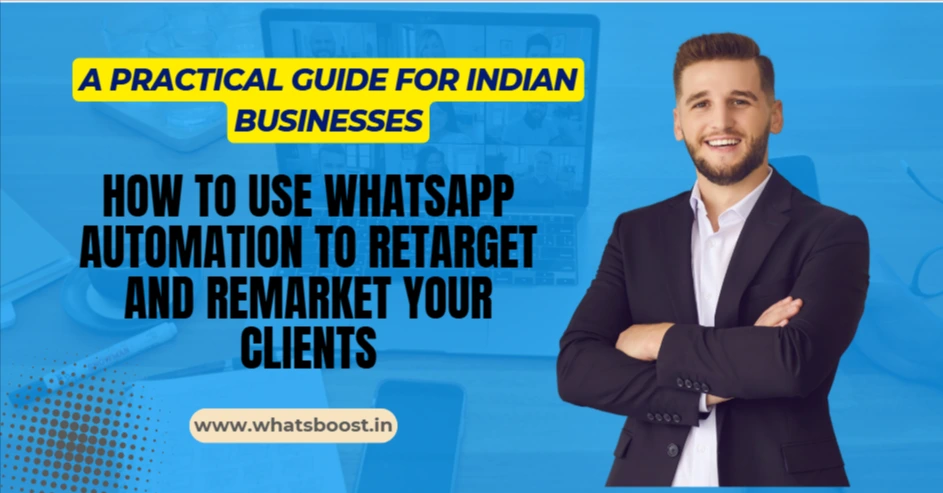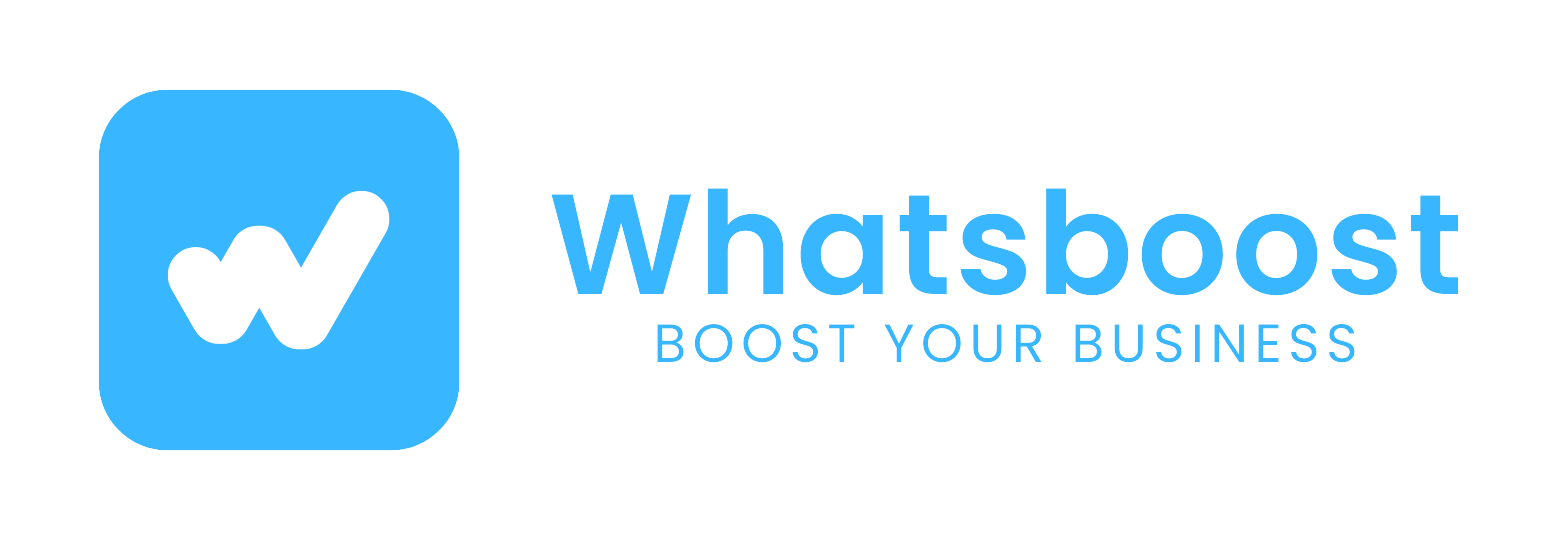
How to Use WhatsApp Automation to Retarget and Remarket Your Clients: A Practical Guide for Indian Businesses
A comprehensive guide for Indian businesses on leveraging WhatsApp automation for high-conversion retargeting and remarketing to recover abandoned carts and boost CLV.
The Silent Revenue Leak Every Indian Business Faces
Picture this: A potential customer visits your e-commerce site, browses through products, adds items worth ₹5,000 to their cart, and then... vanishes. No purchase. No explanation. This scenario is a daily reality for Indian businesses, where cart abandonment rates soar above 70%. This isn't just about lost sales; it's a massive, silent revenue leak, representing wasted marketing spend and missed growth opportunities.
However, these "lost" customers haven't truly disappeared. They are often just one timely, personalized message away from completing their purchase. WhatsApp retargeting and remarketing have emerged as the single most effective strategy to recover these sales in the Indian market. With 487 million WhatsApp users in India and an unparalleled 98% message open rate, this platform is the secret weapon for businesses looking to convert intent into revenue and maximize customer lifetime value. This guide provides a step-by-step roadmap for Indian businesses to leverage WhatsApp automation for superior retargeting and remarketing success.
Understanding Retargeting vs. Remarketing on WhatsApp
While often used interchangeably, the two terms describe distinct, yet equally critical, post-initial-contact strategies. Understanding the difference is key to creating effective WhatsApp campaigns.
What is WhatsApp Retargeting?
WhatsApp Retargeting focuses on re-engaging customers who have shown interest but haven't completed a desired action.
Visitors who added items to their cart but did not check out (Abandoned Cart).
Visitors who browsed specific product categories or pages but left the site (Browse Abandonment).
The goal of retargeting is to convert interested prospects into first-time buyers by providing a gentle, timely nudge on their preferred communication channel.
What is WhatsApp Remarketing?
WhatsApp Remarketing focuses on re-engaging existing customers to encourage repeat purchases or additional services, thereby increasing Customer Lifetime Value (CLV).
Post-purchase follow-ups (e.g., reorder reminders).
3 Win-back campaigns for inactive customers.
Personalized recommendations based on past purchases.
Why WhatsApp Works Better Than Email for Indian Markets
The success of WhatsApp in India stems from a simple behavioral truth: Indian consumers treat WhatsApp as their primary, most trusted communication channel.
Open Rate Factor: WhatsApp messages see a 98% open rate almost instantly, dwarfing email's typical 21% open rate in India. Nearly 80% of WhatsApp messages are read within five minutes.
Direct Personal Connection: Unlike overflowing email inboxes, a WhatsApp message lands in a personal space, fostering a feeling of direct, one-on-one conversation that builds immediate trust and urgency.
The Indian E-commerce Challenge: Cart Abandonment Crisis
The primary target for retargeting is the massive problem of cart abandonment.
Cart Abandonment Statistics in India
Industry data suggests over 70% of all online shopping carts in India are abandoned. This means for every ₹10 lakh in sales, approximately ₹23 lakh in potential sales are lost. While global rates are high, India's mobile-first market compounds the issue, with mobile cart abandonment reaching nearly 81%.
Why Indian Customers Abandon Carts
Understanding the friction points is crucial for crafting an effective WhatsApp message that addresses the specific issue:
Unexpected Costs: 48% of Indian shoppers cite unexpected shipping costs as a reason for abandonment.
Payment & Security Issues: Concerns about payment security and complicated checkout processes are significant barriers.
Mobile Experience: Despite the mobile-first reality, many websites still aren't fully optimized, leading to checkout friction.
WhatsApp retargeting circumvents the flawed website experience by allowing businesses to facilitate the remainder of the purchase directly within the chat interface, offering assistance, answering questions, or even guiding them to integrated payment solutions.
How WhatsApp Automation Solves Retargeting Challenges
Real-Time Engagement Advantage
Automation allows businesses to send a follow-up message within 30-60 minutes of cart abandonment—while the customer's purchase intent is still high. This real-time capability is crucial. By the time an email is checked, the customer may have already purchased from a competitor. WhatsApp ensures you reach them while the decision is being made.
Personal Connection at Scale: The Power of Personalization
The WhatsApp Business API enables smart automation that utilizes customer data (name, cart contents, browsing behavior) to create messages that feel personal:
"Hi Rahul, still thinking about those Nike Air runners? They're popular and only a few pairs are left in your size. Need help deciding?"
This level of personalization at scale transforms generic marketing into a high-converting customer service interaction.
Step-by-Step Guide to WhatsApp Retargeting for Indian Businesses
1. Setting Up Your Retargeting Infrastructure
Effective retargeting requires moving beyond the basic WhatsApp Business App to the WhatsApp Business API.
API Access: You must work with a Business Solution Provider (BSP) like Whatsboost to gain API access, which allows for large-scale, automated, and compliance-driven messaging.
Integration: Seamlessly connect your e-commerce platform (Shopify, WooCommerce, etc.) or CRM with the WhatsApp automation tool.
6 This allows customer behavior to automatically trigger messages.
2. Creating Customer Segments for Retargeting
A one-size-fits-all approach is doomed to fail. Segment your abandoners for targeted messaging:
Behavioral Segmentation:
High-Intent Abandoners: Added items to the cart.
7 Messaging can be about urgency or incentives.Medium-Intent Browsers: Viewed multiple products. Messaging can be about product features, social proof, or a gentle recommendation.
High-Value Abandoners: Carts over a specific monetary value (e.g., ₹5,000+). These may warrant more personalized, even human, follow-up.
Product Category: Customers abandoning items that are urgent (e.g., medicines) need a different sequence than those abandoning fashion items.
WhatsApp Remarketing Strategies That Work
1. Abandoned Cart Recovery on WhatsApp
The sequence must be timely and helpful:
Message 1 (30-60 mins): A non-pushy reminder. "Hi Priya! We noticed you left some items in your cart. Your ₹3,500 order is still available. Need any help completing your purchase?" Include a direct cart link.
Message 2 (24 hours): Added value or urgency. "Still interested in those wireless earbuds? Here's a special 10% discount code valid for 24 hours: COMEBACK10. Plus, we offer free delivery."
2. Post-Purchase Remarketing
This nurtures the relationship after the sale:
Transactional Updates: Automate order confirmation, shipping, and delivery updates.
8 Reorder Reminders: For consumable products (supplements, skincare), track the typical usage cycle and send a personalized reorder reminder just before they run out.
Upsell/Cross-Sell: Based on the purchased product (e.g., bought a camera $\rightarrow$ suggest a compatible lens).
3. Win-Back Campaigns for Inactive Customers
Target customers who haven't purchased in 90-180 days:
Personalized Welcome Back: "Hi Neha! It's been a while. We've missed you! Here's an exclusive 20% discount to welcome you back. What can we help you find today?"
Value Highlight: Share updates on new products or services they missed since their last purchase.
Automation Workflows for Effective Retargeting
Trigger-Based Messaging
Triggers ensure relevance and timeliness. The most common trigger is cart abandonment, but also consider:
Price Drop Alert: Customer views a product $\rightarrow$ Price drops $\rightarrow$ Automated WhatsApp notification sent.
Stock Alert: Customer views out-of-stock item $\rightarrow$ Item returns to stock $\rightarrow$ Automated notification.
Time-Delayed Sequences
Instead of one message, use a sequence of 2-4 messages, each adding value. A typical sequence spans 48 hours to 7 days, balancing persistence with respect.
Personalization at Scale
Use dynamic content tags to customize every element:
"Hi {Customer_Name}! The {Product_Name} you were viewing is now available with {Current_Offer}. Your cart total: ₹{Cart_Value}."
Compliance and Best Practices for the Indian Market
Getting Proper Opt-Ins
For legal and ethical communication via the WhatsApp Business API, explicit opt-in is mandatory.
Implement a clear, non-pre-selected checkbox during checkout: "□ Yes, I'd like to receive order updates, offers, and personalized recommendations on WhatsApp."
Always provide an easy, automated opt-out mechanism (e.g., "Reply 'STOP' to opt out").
Following WhatsApp Business Policy
Respect WhatsApp's rules to avoid account suspension. Never send promotional messages to customers who haven't opted in. Adhere to frequency caps (e.g., no more than 2-3 marketing messages per week per customer).
Measuring Retargeting Success
To justify your investment and scale successful strategies, track these key metrics:
| Metric | Goal | Why it Matters |
| Delivery Rate | 95%+ | Ensures messages are reaching customers. |
| Response Rate | 20-40% | High engagement indicates relevant messaging. |
| Conversion Rate | 25-30% | The percentage of recipients who complete a purchase. |
| Revenue Recovery | Maximize | Total revenue directly generated by the campaigns. |
ROI Calculation for WhatsApp Campaigns
WhatsApp retargeting consistently delivers exceptional ROI, often 200-300% better than traditional email.
With India's lower messaging costs (typically ₹0.12 - ₹0.80 per message) and high conversion rates, it's not uncommon to see ROI figures reaching over 70,000%. For example, recovering 250 carts with an average value of ₹2,500 from a ₹5,000 campaign yields an ROI of 74,900%.
Real-World Applications for Different Industries
E-commerce and D2C Brands
Browse Abandonment Recovery: "Hi Kavita! I saw you were browsing our jewelry collection. Looking for something specific? I'd be happy to help you find the perfect piece."
Service-Based Businesses
Appointment Reminders/Renewals: "Hi Priya! It's been 6 weeks since your last appointment. Ready for your next session? Reply with your preferred date and time."
B2B Lead Nurturing
Proposal Follow-ups: "Hi Rajesh, thanks for attending our demo last week. Have you had a chance to review the proposal? I'm here to clarify any sections."
Conclusion: Turning Lost Opportunities into Revenue
WhatsApp retargeting is not a future trend; it is the current standard for high-growth Indian businesses. Every abandoned cart is a conversation left unfinished, and WhatsApp provides the opportunity to restart that conversation in the most effective way possible.
The high open rates, immediate engagement, and deeply personal nature of WhatsApp communication translate directly into superior conversion rates and exponential ROI compared to traditional channels. By implementing a sophisticated, compliant, and well-segmented WhatsApp automation strategy, Indian businesses can move past simply acquiring new customers and instead focus on maximizing revenue from the interested prospects they already have. The question for businesses is no longer if they should adopt WhatsApp retargeting, but how quickly they can deploy it to start recovering the revenue they are currently leaving on the table.
